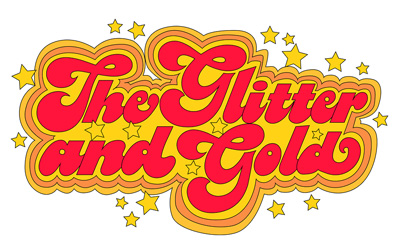Truman Capote wrote of Marilyn Monroe as a person defined by presence, luminosity, and flickering intelligence. To Capote, she was something more than her chequered career in acting. The frozen poetry of her life was a quality that could only have been caught on camera. Two of the traits which made her famous were also the tragic instruments of her undoing. “A beautiful child,” Capote reflected, “without a concept of discipline or sacrifice.”
The Woman Who Will Not Die
Marilyn Monroe was a minor American actress. Remarkable even in her own lifetime, was her media presence. Long before Paris Hilton or Kim Kardashian, she was famous for being famous. Every aspect of her life belonged to the public.
Her marriage to baseball star Joe DiMaggio and playwright Arthur Miller captured the imagination of millions. Even these tumultuous relationships paled in comparison with her rumored love affairs. Foremost amongst these were widely speculated relationships with 35th US President John F. Kennedy and later his brother Bobby Kennedy.

Monroe poses for a promotional image.
Marilyn Monroe was a photographic icon
Eclipsing even this was Monroe’s status as a photographic icon. Monroe could turn on her inner glow and flashing a mesmerizing smile in a second. Dedicated to her medium, Monroe spent hours, days, and even weeks in search of the perfect image. Individual photographers often took thousands of photos as Marilyn did everything within her power to make sure the images lived up to her own perfectionistic standards.
In an era where social media images define our identity, the appeal of Monroe’s photogenic personality has been amplified. “I’m selfish,” Monroe described herself in her best-known quote, “impatient and a little insecure. I make mistakes, I am out of control and at times hard to handle. But if you can’t handle me at my worst, then you sure as hell don’t deserve me at my best.”

Monroe poses for a promotional image.
Marilyn Monroe lived freely
Born out of wedlock, Monroe never met her father. At age 5, her mother suffered a nervous breakdown. As a result, she was forced to live in foster homes. She suffered enormously during this time. Monroe later revealed she was sexually abused.
An unwanted child, Monroe wanted to be, above all, loved. She would do anything to get it. After building a reputation as a model, she landed a number of small roles in American film. Then, in 1953, she appeared in three hit Hollywood movies. Officially entering Hollywood’s A-List, she refused to live life in half measure.
While many stars of the time rivaled Marilyn in beauty, none lived so freely. Marilyn dated vigorously. Drugs were a constant part of her life. She was a dangerous woman, operating at a time when feminism was yet to be given a name.
Monroe was no fool when it came to her career. While the ditzy “platinum sex goddess” roles she played were a far remove from her private life, she was willing to act the part. “I can be smart when it’s important,” she shared in Gentleman Prefer Blondes, “but most men don’t like it.”

Monroe poses for a promotional image by photographer Richard Avedon.
Her life offscreen
Offscreen, Monroe continued to play on the sexual and childlike cliches of her Hollywood roles. These contradictory opposites of sexual adult and emotional child, author Gloria Steiman notes, made her irresistibly attractive to men. Her ambition, in contrast, was downplayed if not outright suppressed by a male-dominated press. Despite being taboo, it was obvious to a generation of women that Monroe actively sought sex and power. Many took Monroe’s example as permission to do the same.
A tragic end
“I seem to be a whole superstructure,” Monroe once shared, “with no foundation.” No telling of Monroe’s story can be complete without discussing her haunting and senseless death. Marilyn carried these troubles close to her chest. Behind her public facade, she was anxious, depressed, and struggled with sleep.
Her abandonment as a child continued to haunt her. What is more, Monroe suppressed much of her inner self to be the Pretty Girl society demanded. As the wife of Joe DiMaggio, she was the victim of domestic violence. Her last husband Arthur Miller had been emotionally abusive. Suffering from endometriosis, both of Monroe’s marriages were punctuated by painful miscarriages.
By 1962 Monroe’s acting career had fallen on difficult times. Fired from the set of Something’s Got To Give after consistently failing to arrive on time, Monroe was despondent. Then, on August 4, 1962, she overdosed on drugs in her Los Angeles home.
Her lifeless body was found shortly after. She was still in bed, cradling a phone in one hand. The cause of death was a barbiturate overdose. Monroe was 36. Shortly before, Monore predicted her demise. Describing herself in an uncompleted biography as, “The kind of girl they found dead in the hall bedroom with an empty bottle of sleeping pills in her hand.”

Unusual longevity
10, 25, and even 50 years after her death, many have commented on the unusual longevity of Marilyn Monroe’s appeal. Every era has found something in Monroe’s image to hold on to. What is more, each decade following her death has given the public a host of stars indebted to her image. While Monroe’s own recording career may have been a side note, the world of music is no exception. In the 1980s came Madonna. The ’90s had Gwen Stefani. More recently pop star Doja Cat and indie icon Lana Del Rey have drawn upon her style. What is more, the world of fashion is still is celebrating Marilyn Monroe. Look no further than contemporary pop icon Kylie Jenner, who made headlines in 2019 after imitating Monroe’s iconic platinum blond hair and cherry red lipstick look for Halloween.
Final thoughts on Marilyn Monroe
Marilyn Monroe’s press secretary Patricia Newcomb once recalled an interview Marilyn gave before her death. Here Monroe unsuccessfully begged the reporter to publish the following words. “What I really want to say,” Monroe said, “what the world really needs is a real feeling of kinship. Everybody, stars, laborers, Negroes, Jews, Arabs. We are all brothers. Please don’t make me a joke. End the interview with what I believe.”
Most stars, after all, arrive in spectacular fashion and are forgotten just as fast. Monroe’s fame endures. Why? Perhaps she had a hidden flair for the camera, a burning desire to be glamorous which transcended that of any other person before, during, or after her lifetime. A more esoteric theory is that a vacuum created by the absence of Europe’s pagan gods of love and beauty led Americans to create their own in Marilyn’s image. Mass communication theories suggest Marilyn simply arrived at the right time in history to have her doomed youth broadcast to the greatest number of people. Whatever it is Monroe had, no one else has ever been able to do it better.
Eternally young and beautiful, Marilyn Monroe left behind countless possibilities of a life that could have been. In 2021, the year of her 95th birthday had she lived, Monroe continues to hook into our emotions, deepest hopes, and dreams. She remains a complex symbol of womanhood and its vulnerabilities. As time moves onward, the names of her lovers and films slip into the fog of the past. With the passing of years, she becomes increasingly singular in her image, a pure expression of beauty, glamour, and desire.










